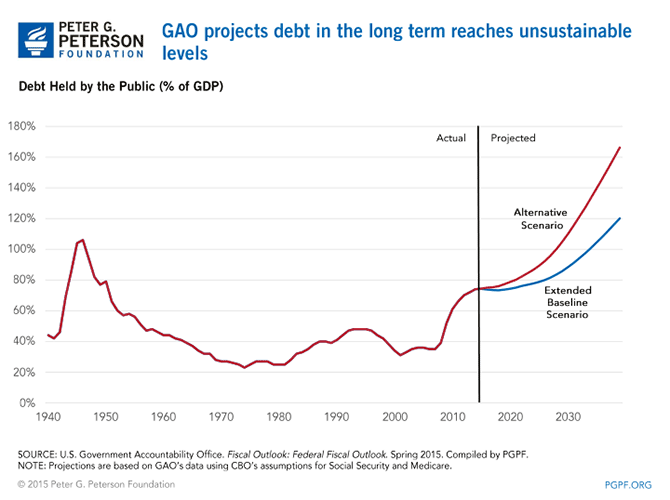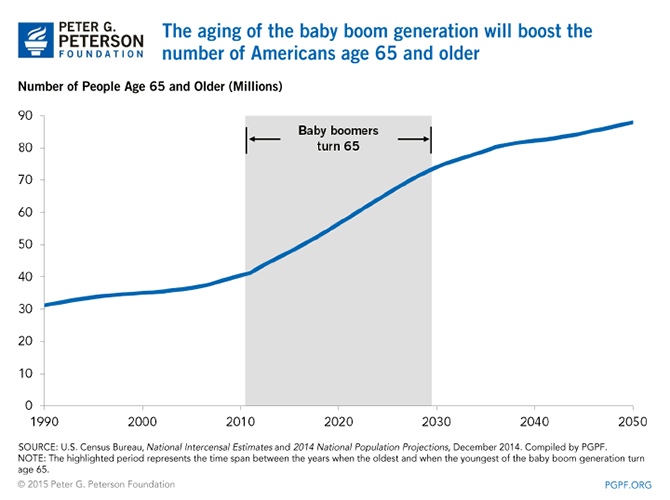You are here
GAO Sends Clear Warning: Long-term Debt is on an Unsustainable Path
In its latest Federal Fiscal Outlook report, the U.S. Government Accountability Office (GAO) warns that debt will reach unsustainable levels. GAO projects that without significant action on the budget, federal debt could climb from 74 percent of GDP in 2014 to 166 percent of GDP in 2039.
In its analysis, the GAO finds that over the next 25 years:
- Federal debt could climb to four times its 50-year historical average;
- Federal spending is projected to grow by more than 50 percent as a share of GDP over the next 25 years, while revenue is projected to remain relatively steady as a share of GDP;
- Spending is driven by rising healthcare costs and an aging population — with 10,000 baby boomers turning 65 every day starting next year;
- Delaying decisions on the budget raises the costs of addressing our long-term debt.
Long-Term Debt is on an unsustainable path
GAO’s long-term projections illustrate that our already high levels of debt will rise significantly in coming decades. GAO projects that under current law, federal debt will climb from 74 percent of GDP in 2014 to 120 percent of GDP in 2039. Under a less optimistic alternative scenario, debt soars to 166 percent of GDP in 2039. Under either scenario, debt far exceeds its 50-year average of 38 percent of GDP.

An aging population will place significant pressure on the budget
Over the next 15 years, the retirement of the baby boomers and increases in longevity will place growing pressures on federal programs that serve older Americans — Social Security, Medicare, and Medicaid. The number of people age 65 or older will climb from 46 million in 2014 to 82 million in 2039 — a 78 percent increase. At the same time, cost of our major healthcare programs will increase from 4.8 percent of GDP in 2014 to 8.1 percent of GDP in 2039. These two factors — combined with rising interest costs — are the main drivers of the projected 50 percent increase in spending as a percentage of GDP over the next 25 years, according to GAO.

Delaying decisions raises costs
While our long-term fiscal challenges may be daunting, delaying decisions on how to address these issues will only lead to more difficult choices in the future.
According to GAO, closing the 75-year fiscal gap — the required increase in revenues or reductions in spending required to stabilize debt at its current level — could require an average annual reduction in the deficit over this period (excluding interest) of 6.7 percent of GDP. That is equivalent to a 27 percent reduction in non-interest spending or a 37 percent increase in revenues (or some equivalent combination of the two). If policymakers wait ten years before making fiscal decisions, closing the fiscal gap would require a spending reduction of 31 percent or an increase in revenues by 43 percent.
Conclusion
The GAO findings are a strong warning that our current long-term fiscal path is unsustainable, adding to a significant body of evidence presented by many other organizations. Without action, our debt will reach levels that harm our economy. Policymakers should work together to solve our long-term fiscal challenges now. Delaying action will only result in tougher and more severe actions required to solve our challenges.
